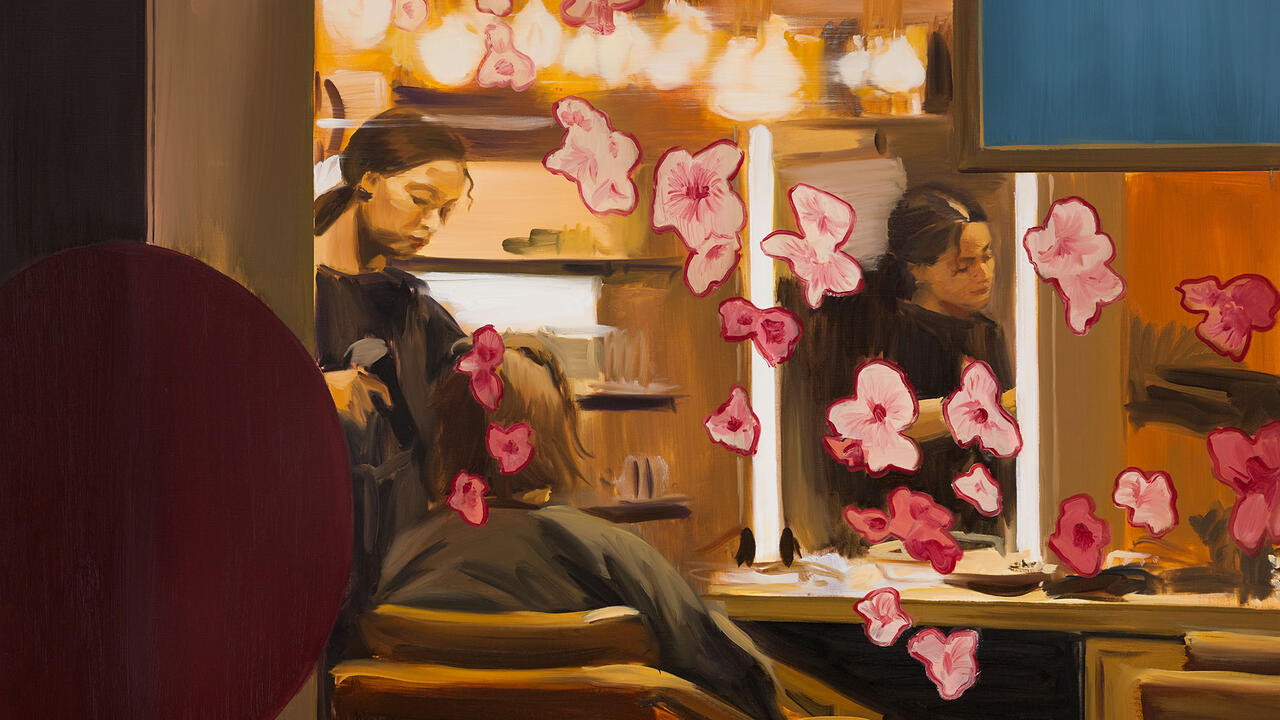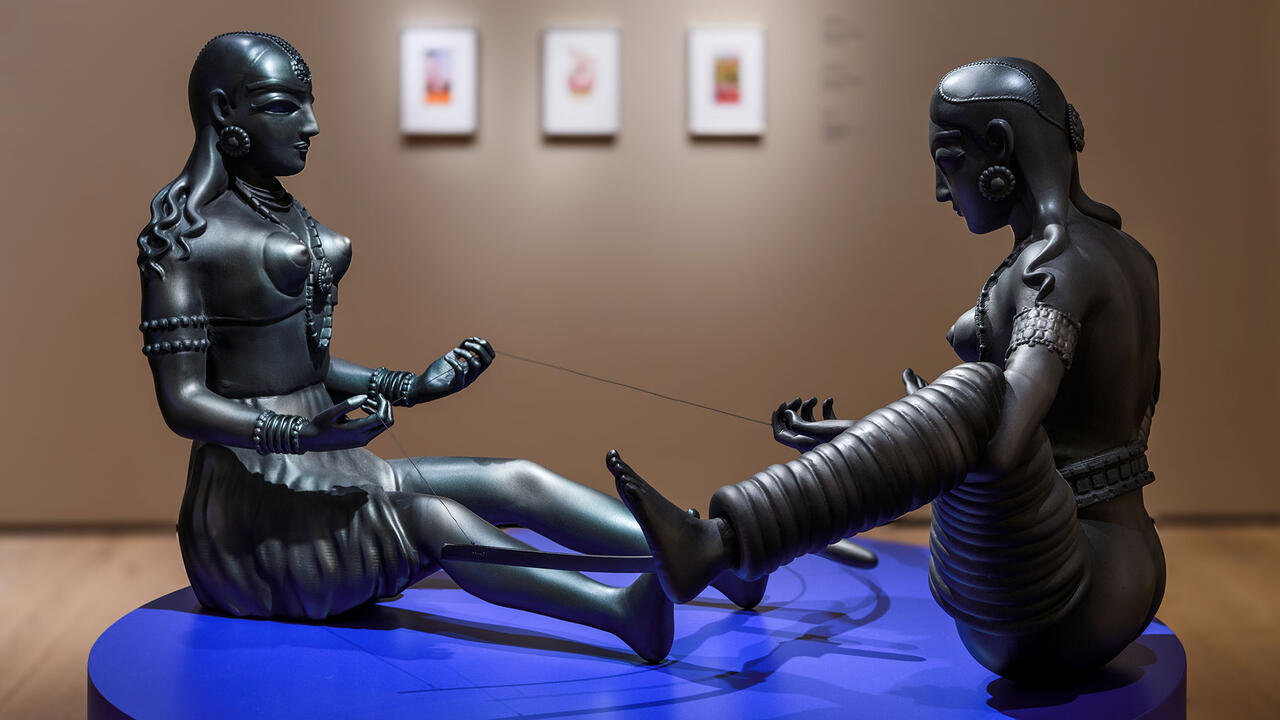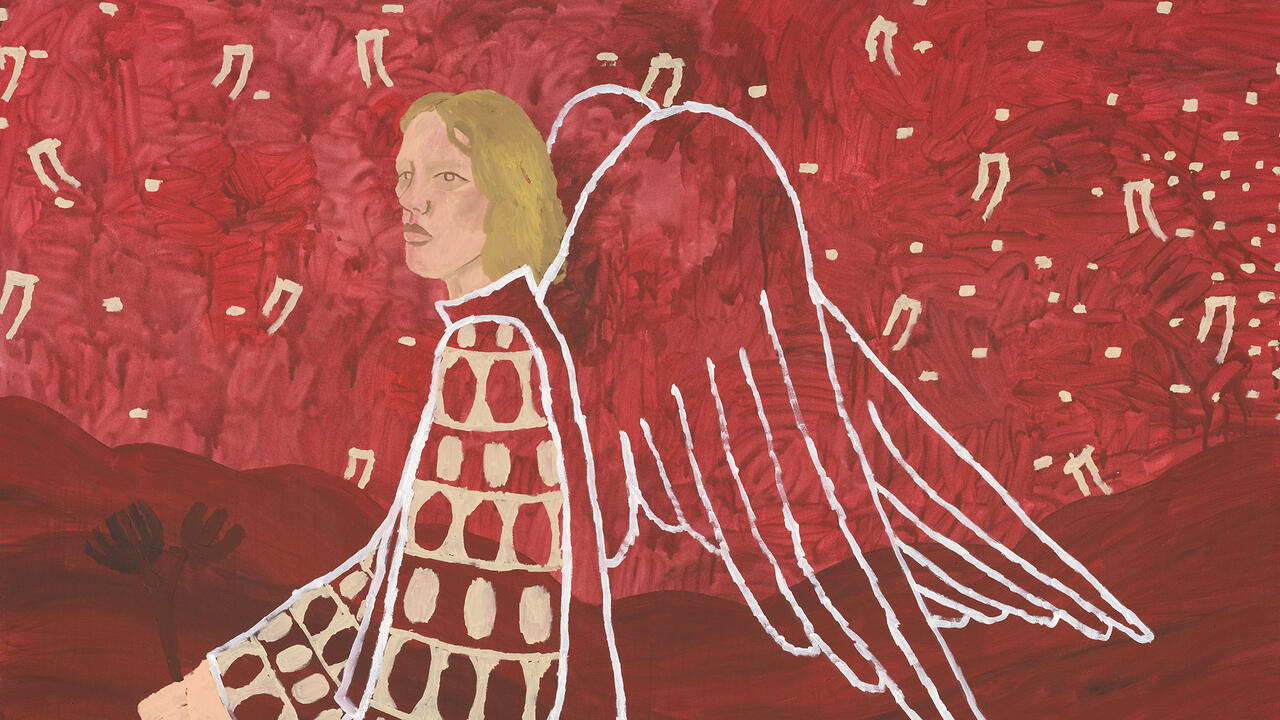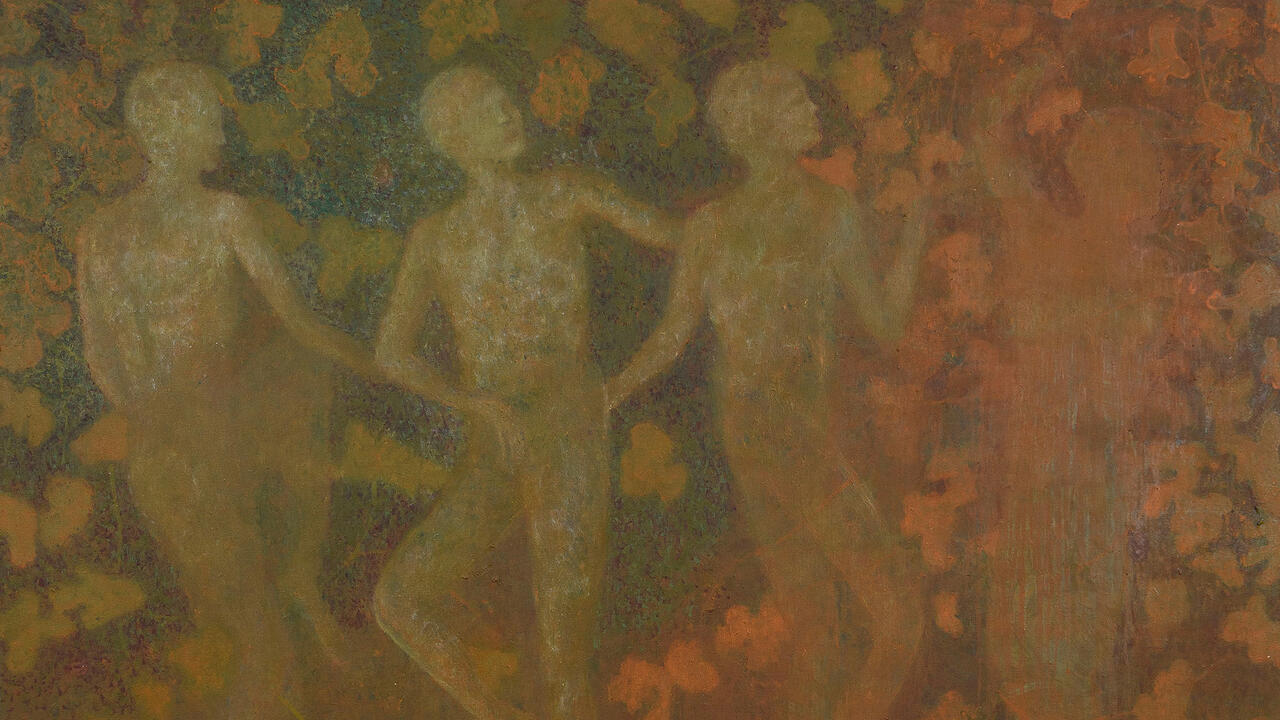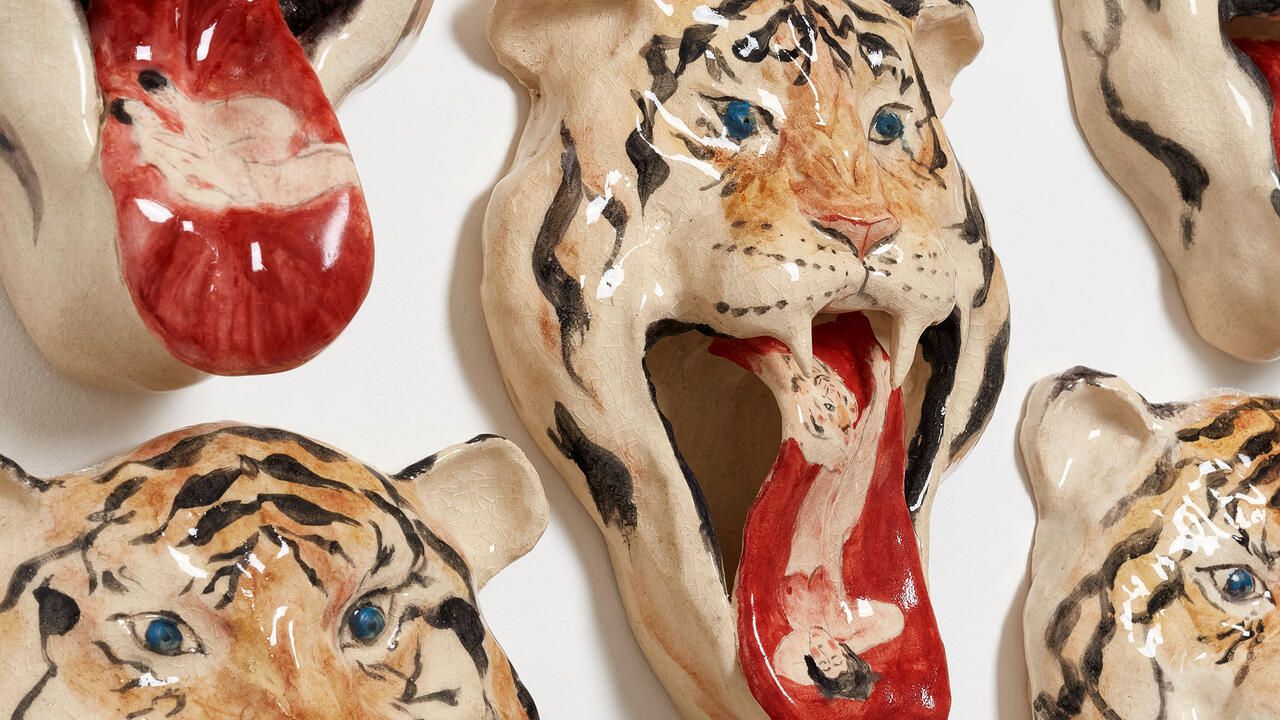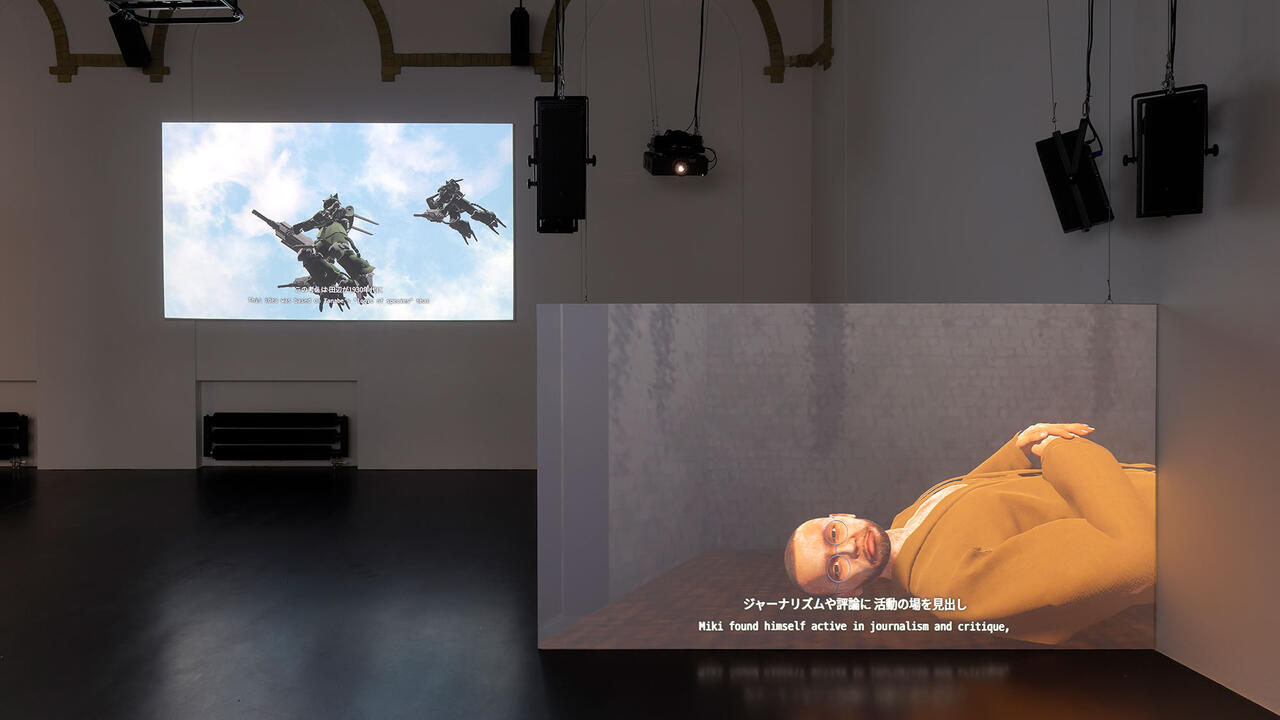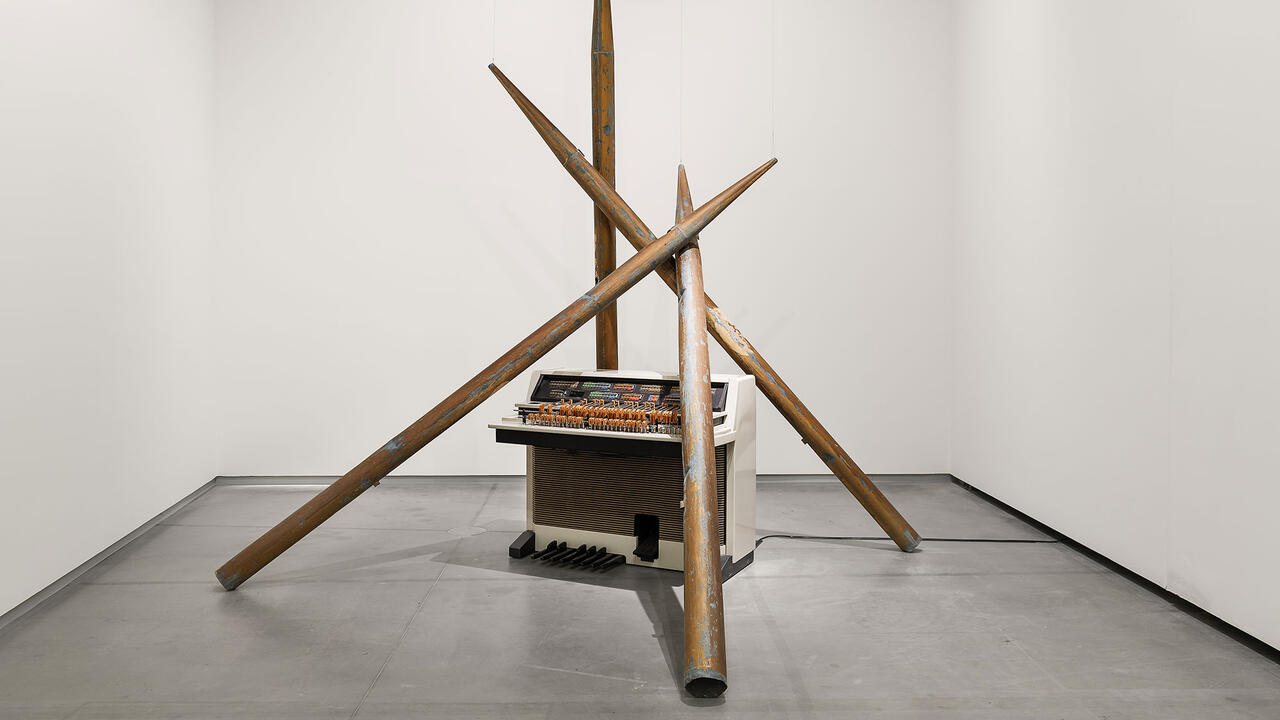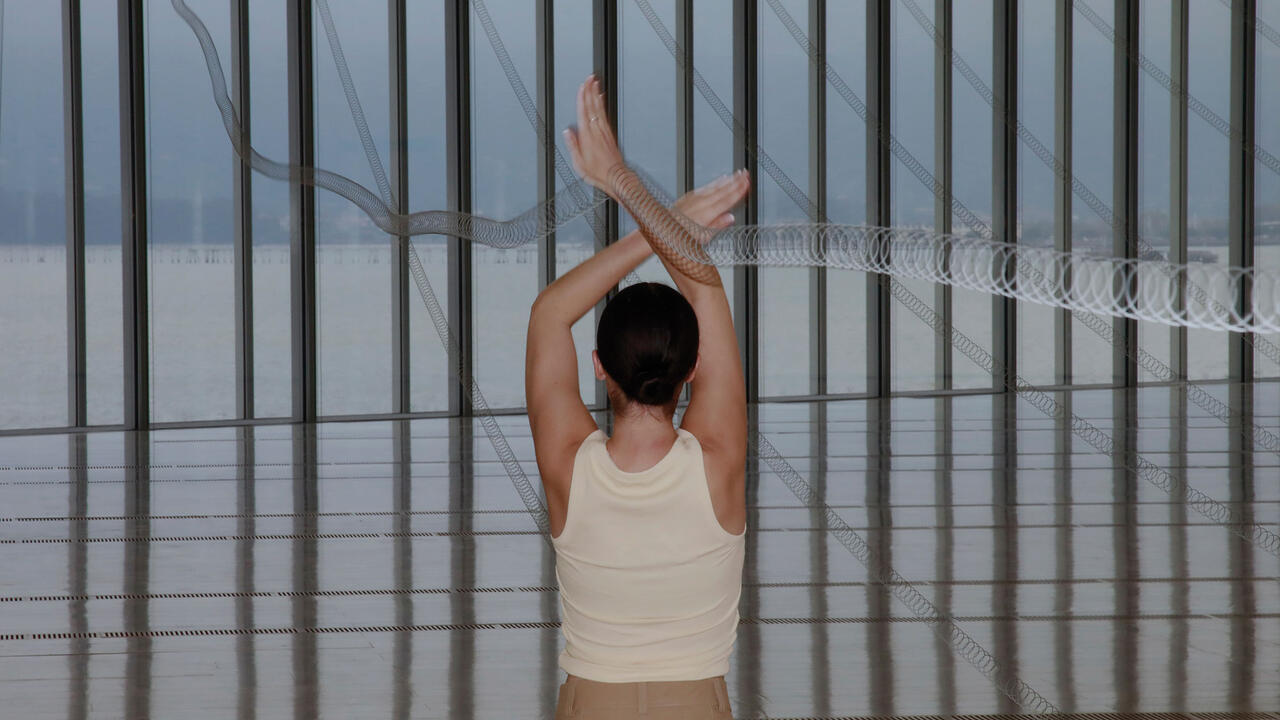Five Exhibitions to See in Europe This Spring
From Bekhbaatar Enkhtur’s sleeping wax figure at Matèria, Rome, to Cindy Sherman’s baroque selfies in tapestry form at Aarhus Art Museum
From Bekhbaatar Enkhtur’s sleeping wax figure at Matèria, Rome, to Cindy Sherman’s baroque selfies in tapestry form at Aarhus Art Museum

Josip Novosel
Galerie Noah Klink, Berlin
17 February – 6 April

Berlin’s coat of arms may feature a bear, but everybody knows Germany’s capital is really a city of dogs. Like it or not, Berliners must co-exist with the city’s four-legged friends, sharing parks, pavements and even bars. Featuring an array of what the exhibition literature tells us are gay men posing with their dogs, the eleven paintings in Josip Novosel’s ‘The Good Boi’ fit perfectly into this environment. Their titles are as straightforward as the scenes they depict: Portrait of a man with a dog (2022) shows a white-collar type in a trench coat with a dog outside the fancy entrance to a turn-of-the-century apartment block; in Portrait of a man with a Dalmatian dog (2023), the protagonists embrace on a sunbeam; Morning run pace the gaze (2022) depicts a moustachioed Tom Selleck lookalike and his dog going through their fitness routine, while Unconditional love (2023) portrays a happily expectant pug whose eyes reflect the silhouette of its returning owner. – Kito Nedo
Bekhbaatar Enkhtur
Matèria, Rome
21 February – 22 April

Fragility and transience are key themes in Enkhtur’s practice. His frequent use of organic materials like clay and beeswax – easy to shape but also mutable if left raw – questions the nature of sculpture, understood here, according to the exhibition literature, as the ‘representation of matter’. What remains once the artist’s works deteriorate, exposed to air, light and time? Is there an essence, a soul even, that endures when the piece eventually disappears, or is everything destined to be forgotten? – Ana Vukadin
Martin Wong
KW Institute for Contemporary Art, Berlin
25 February – 14 May

Martin Wong, a queer Chinese American with ranchero flair, was a dynamo of the downtown New York art scene in the 1980s. His trippy sense of urbanism informed portrayals of the soaring tenements and tumbling rubble of New York’s down-and-out Lower East Side, haunted by heroin, shadowed by HIV. He painted firemen kissing in front of a smouldering high-rise (Big Heat, 1986) and a sobbing Statue of Liberty made of bricks (Untitled [Statue of Liberty], 1990). But the lowly Untitled (Green Storefront) (1985) is one of his most intensely psychedelic works. – Travis Diehl
Cindy Sherman
Aarhus Art Museum, Aarhus
14 February – 11 June

The golden age of tapestry arrived in Brussels during the fifteenth century, when Burgundian dukes lined their palaces with woven scenes of morality and religion. Since then, tapestry has remained the medium of privilege and royalty, associated with wealth, prosperity and the palaces of Europe. With that in mind, it feels curiously incongruous when a contemporary artist such as Cindy Sherman turns her attention to this historic practice. Yet, in a radical shift, Sherman – who has spent the past 45 years transforming herself into damsels, vamps, ageing Hollywood starlets and ghoulish clowns through her photography – began producing textile-based work in 2019. ‘Tapestries’, currently on view at ARoS Aarhus Art Museum, marks the series’ first outing at a European museum. – Alice Godwin
Juan Muñoz
Sala Alcalá 31, Madrid
14 February – 11 June

Undoubtedly Spain’s most internationally celebrated artist of the late 1980s and ’90s, Juan Muñoz, who died in 2001, would have been 70 this year. The simultaneously familiar yet baffling nature of his work imbues it with an insistent mood of suspense. This exhibition centres on more than a dozen works that function almost like scenography and emotive storytelling. It culminates with Plaza (1996) – first conceived for the Palacio de Velázquez in Madrid and not seen in the capital since – which features a footless group of Muñoz’s characteristic grey male resin statues, each with identical frozen grins and oversized suits, each isolated even in the crowd. A companion show, focusing on the first decade of the artist’s practice, will open at the Museo Centro de Arte Dos de Mayo in June. – Max Andrews
Main image: Josip Novosel, ‘The Good Boi’, 2023, exhibition view, Galerie Noah Klink, Berlin. Courtesy: the artist and Galerie Noah Klink, Berlin; Photo: Hans Georg Gaul








